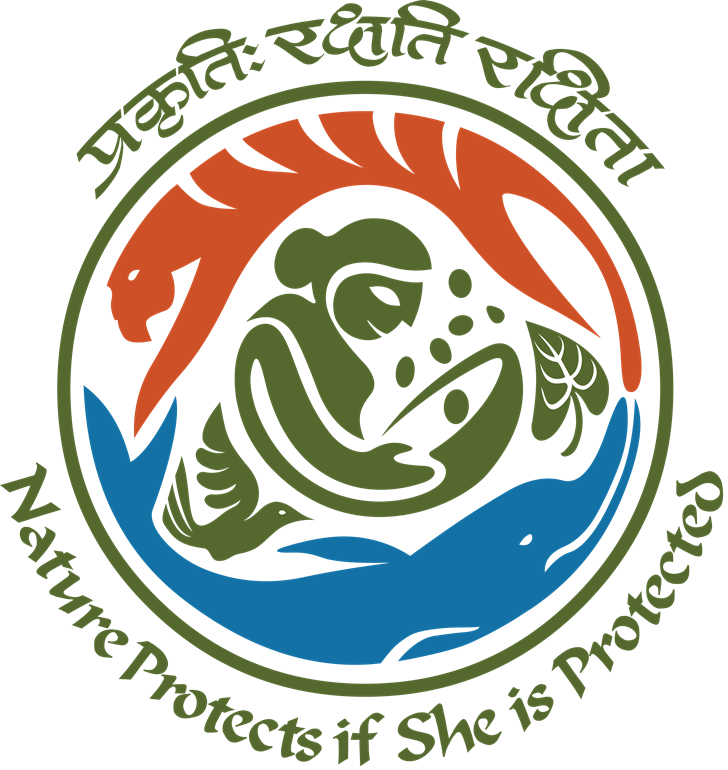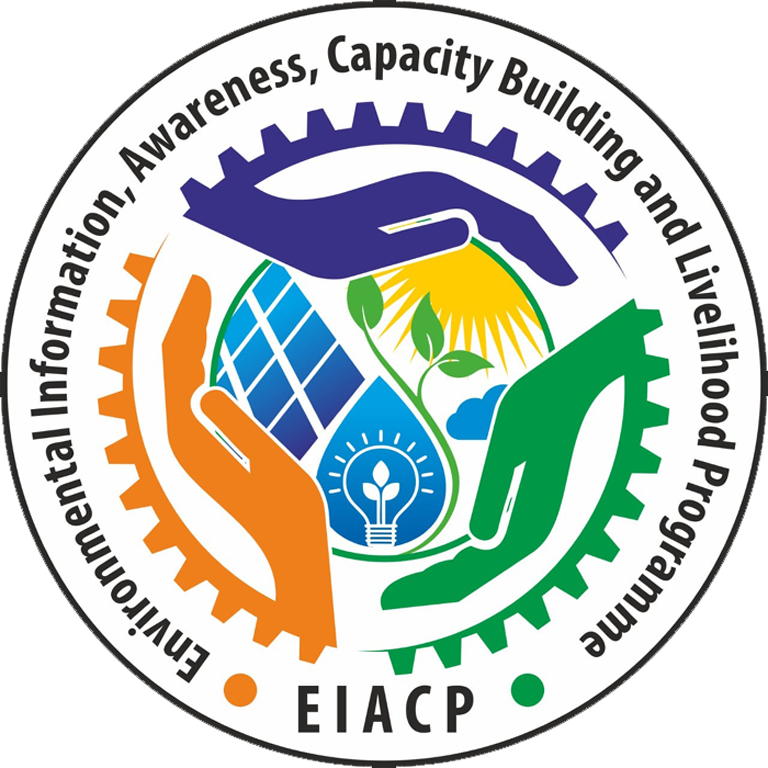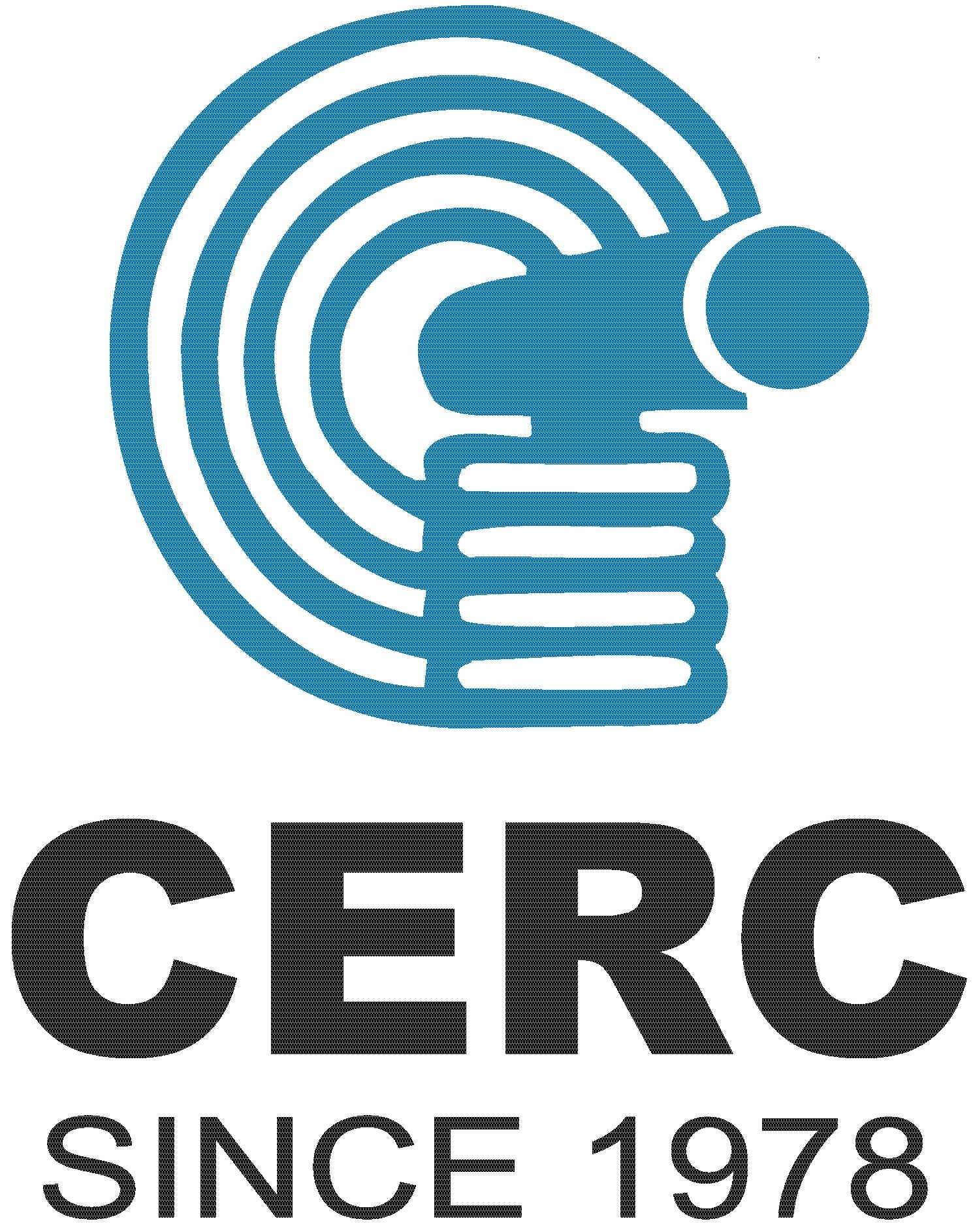There are a number of ecolabel schemes across the world. The ecolabels and national ecolabels coexist well. Some of the world’s manufacturers and retailers are working on a scheme to allow their products sold globally to be labeled with logos depicting to what degree the items’ production and usage would impact the environment. The scheme amounts to one of the most ambitious efforts to create a set of standards for different types of manufactured products that would measure the effect on the environment of the steps involved in the production of an item.
When a product has been awarded both a national ecolabel and the other ecolabel, there will be two logos displayed side by side on the product. The labels could be used to inform consumers about how much impact the production of an item has on the environment.
Global Animal Partnership
 The Global Animal Partnership (GAP) is committed to recognising farmers and ranchers that exceed industry standards and strive to continuously improve animal welfare. The certification programme is comprised of a series of step levels, each corresponding to a set of animal welfare standards. The label means that the animals were raised on farms that were verified to meet the farm animal welfare standards of GAP. The programme uses six tiers, or steps, each representing a different set of standards for how animals are raised on the farm. The product label indicates which step level is achieved. Step 1 is the lowest rating; Step 5+ signifies that higher standards of animal welfare were met.
The Global Animal Partnership (GAP) is committed to recognising farmers and ranchers that exceed industry standards and strive to continuously improve animal welfare. The certification programme is comprised of a series of step levels, each corresponding to a set of animal welfare standards. The label means that the animals were raised on farms that were verified to meet the farm animal welfare standards of GAP. The programme uses six tiers, or steps, each representing a different set of standards for how animals are raised on the farm. The product label indicates which step level is achieved. Step 1 is the lowest rating; Step 5+ signifies that higher standards of animal welfare were met.
Grassfed
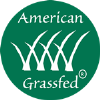 The American Grassfed label is highly meaningful and verified. It means that the animals were grass-fed throughout their entire lives (after weaning), with no grain ever. The animals had continuous access to pasture and were not raised in confinement. The standards also prohibit antibiotics, growth hormones, and the intentional feeding of GMOs. The goal of the American Grassfed Association (AGA) is to promote the grassfed industry through government relations, research, concept marketing and public education. AGA’s standards apply to ruminant animals only — beef, bison, goat, lamb and sheep. AGA-Certified producers are audited annually by independent, third parties to ensure continuing compliance with the standards. Only AGA-Certified members are permitted to use the AGA logo, trademark, or other identifying marks on their packaging, marketing materials, or web sites.
The American Grassfed label is highly meaningful and verified. It means that the animals were grass-fed throughout their entire lives (after weaning), with no grain ever. The animals had continuous access to pasture and were not raised in confinement. The standards also prohibit antibiotics, growth hormones, and the intentional feeding of GMOs. The goal of the American Grassfed Association (AGA) is to promote the grassfed industry through government relations, research, concept marketing and public education. AGA’s standards apply to ruminant animals only — beef, bison, goat, lamb and sheep. AGA-Certified producers are audited annually by independent, third parties to ensure continuing compliance with the standards. Only AGA-Certified members are permitted to use the AGA logo, trademark, or other identifying marks on their packaging, marketing materials, or web sites.
A range of ecolabelling and certification schemes exists in the seafood and fisheries - wild capture fisheries and aquaculture - with each scheme having its own criteria assessment processes.
The Bluesign
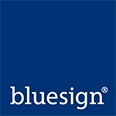 To reduce the ecological footprint of textile industry, the bluesign® standard brings together the entire textile manufacturing chain. The bluesign® standard analyses all input streams – from raw materials to chemical components, to resources – with a sophisticated “Input Stream Management” process rather than focusing on the finished product testing. Beginning from the production, the components are assessed based on their eco toxicological impact. So the harmful substances can be eliminated from the starting. The key aspect of the bluesign® standard is never to compromise on product functionality, quality or design. By using “Best Available Technology” (BAT), the whole textile manufacturing chain ensures that products would meet the environmental standards without cutting back on performance requirements.
To reduce the ecological footprint of textile industry, the bluesign® standard brings together the entire textile manufacturing chain. The bluesign® standard analyses all input streams – from raw materials to chemical components, to resources – with a sophisticated “Input Stream Management” process rather than focusing on the finished product testing. Beginning from the production, the components are assessed based on their eco toxicological impact. So the harmful substances can be eliminated from the starting. The key aspect of the bluesign® standard is never to compromise on product functionality, quality or design. By using “Best Available Technology” (BAT), the whole textile manufacturing chain ensures that products would meet the environmental standards without cutting back on performance requirements.
Craft Mark
 Leveraging Craftmark as a brand, the All India Artisans & Craftworkers Welfare Organization (AIACA), accredits genuine Indian handicrafts, encourages fair trade standards across the sector and supports new product development working with both grass root artisans and new designers, among many other activities that support traditional handloom and handicrafts from India. AIACA provides Craftmark logo for use by craft-based businesses, cooperatives and NGOs and this certification prohibits child labor. Craftmark is endorsed as a seal of authenticity, and as a reassurance of quality and integrity. Craftmark helps consumers make informed and ethical choices. The seal is licensed to producers or retailers of Indian handicraft products. To be certified applicants
undergo a vigorous process of assessment, including onsite monitoring, and an independent, transparent review by a panel consisting of leaders from the crafts sector.
Leveraging Craftmark as a brand, the All India Artisans & Craftworkers Welfare Organization (AIACA), accredits genuine Indian handicrafts, encourages fair trade standards across the sector and supports new product development working with both grass root artisans and new designers, among many other activities that support traditional handloom and handicrafts from India. AIACA provides Craftmark logo for use by craft-based businesses, cooperatives and NGOs and this certification prohibits child labor. Craftmark is endorsed as a seal of authenticity, and as a reassurance of quality and integrity. Craftmark helps consumers make informed and ethical choices. The seal is licensed to producers or retailers of Indian handicraft products. To be certified applicants
undergo a vigorous process of assessment, including onsite monitoring, and an independent, transparent review by a panel consisting of leaders from the crafts sector.
Silk Mark – A Quality Assurance label
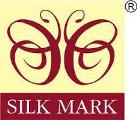 Silk Mark is a certification mark for silk textiles in India. The mark certifies that the piece of textile is made of pure natural silk. The certification is provided by 'Silk Mark Organisation of India'(SMOI), a society set up by the state-controlled Central Silk Board of India. SMOI is an initiative of Central Silk Board, Ministry of Textiles and Government of India. SMOI Corporate Office is headquartered in Bangalore and has thirteen Silk Mark offices across the country. Silk Mark protects the interests of consumers. Initially it was a hang-on tag on which a unique numbered hologram would be affixed. Due to chances of faked or reused a fusion label embedded with nano particles has been introduced to ensure security.
Silk Mark is a certification mark for silk textiles in India. The mark certifies that the piece of textile is made of pure natural silk. The certification is provided by 'Silk Mark Organisation of India'(SMOI), a society set up by the state-controlled Central Silk Board of India. SMOI is an initiative of Central Silk Board, Ministry of Textiles and Government of India. SMOI Corporate Office is headquartered in Bangalore and has thirteen Silk Mark offices across the country. Silk Mark protects the interests of consumers. Initially it was a hang-on tag on which a unique numbered hologram would be affixed. Due to chances of faked or reused a fusion label embedded with nano particles has been introduced to ensure security.
GoodWeave International

GoodWeave International (GWI) is a non-governmental organization working to end child labor in the handmade rug industry and offer educational opportunities to children in South Asia. The GoodWeave certification program was formerly known as “RugMark”. The GoodWeave label is issued to rug manufacturers that adhere to the Generic GoodWeave Standard, agree to its independent verification and voluntarily join as licensees. GoodWeave’s standard is currently being broadened to include additional labor and environmental criteria that aim to raise the standard of living in weaving communities and address the root causes of child labor.
In India, GoodWeave International is based in New Delhi and Varanasi. The organisation, not only concerned with eradicating child labour in the rug industry, but also working towards ensuring adult rug workers are treated fairly and that rugs made are not at the expense of their health, safety, or environment.
Better Cotton Initiative

A voluntary organisation, the Better Cotton Initiative (BCI) helps millions of farmer to grow cotton in a way that is good for the environment and the farmers and is more economical across the globe. It encourages farmers to adopt the better management practices in cultivation of cotton to achieve measurable reductions in main environmental impacts, while improving social and economic benefits for all cotton farmers across the world.
The big challenges to making cotton more sustainable are excessive use of pesticides (bad for human health and the environment), environmentally inefficient production methods (which create water shortages and degrade the soil) and poor working conditions. Adidas, Gap Inc., H&M, ICCO, IFAP, IFC, IKEA, Organic Exchange, Oxfam, PAN UK, and WWF founded the Better Cotton Initiative in 2005 to take steps towards the sustainable and better management practices for the cultivation of cotton.Better Cotton was first harvested from farmers in Brazil, India, Mali, and Pakistan in 2010-11. It is available 2012 onwards from China. Turkey is also aiming to produce Better Cotton as well. BCI for other regions is regularly in touch with organisations and governments to bring the Better Cotton programme.
Global Organic Textile Standards (GOTS)
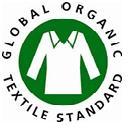
The Global Organic Textile Standard (GOTS) is the leading textile processing standard for organic fibres worldwide,including ecological and social criteria, backed by independent certification of the entire textile supply chain. The aim to develop the Standards was to combine the various existing and draft standards in the area of eco textile processing. It defines the requirements to ensure the organic status of textiles- from harvesting of the raw material through responsible manufacturing of the product environmentally and socially to the labeling of the product. So it can provide a credible assurance to the end consumer. It covers the production, processing, manufacturing, packaging, labeling, exportation, importation and distribution of all natural fibres. Processors and manufacturers shall be enabled to supply their organic fabrics and garments with one certification accepted in all major selling markets. Version 3.0 was published on 1 March 2011, six years after the introduction of the initial version. High ecological and social requirements as well as global practicability and verifiability were taken into consideration in the revision work in order to achieve reliable and transparent criteria. The International Working Group is comprised of four reputed member organizations-the OTA (USA), IVN (Germany), Soil Association (UK) and JOCA (Japan), which contribute their respective expertise in organic farming and environmentally and socially responsible textile processing to GOTS together with other international stakeholder organizations and experts.
Oeko Tex Standard
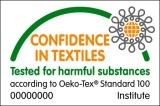 The standard is a globally uniform testing and certification system for textile raw materials, intermediate and end products at all stages of production. It is applicable to textile products, including fabrics, apparel, textile products for infants, textile flooring materials, fabric wallpaper, mattresses, linens, towels and beddings. In addition to hazards posed to human health, textile products are assessed for energy consumption, resources consumption, pollution load, and workplace management in the production process. Textile products may be certified according to Oeko-Tex Standard 100 only if all components meet the required criteria without exception. It is found on millions of products around the world in almost all retail segments.
The standard is a globally uniform testing and certification system for textile raw materials, intermediate and end products at all stages of production. It is applicable to textile products, including fabrics, apparel, textile products for infants, textile flooring materials, fabric wallpaper, mattresses, linens, towels and beddings. In addition to hazards posed to human health, textile products are assessed for energy consumption, resources consumption, pollution load, and workplace management in the production process. Textile products may be certified according to Oeko-Tex Standard 100 only if all components meet the required criteria without exception. It is found on millions of products around the world in almost all retail segments.
Handloom Mark:Guarantee for genuine hand woven products
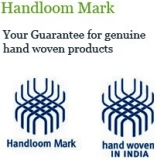
The "Handloom Mark" provides a collective identity to the handloom products and can be used not only for popularising the hand woven products but can also serve as a guarantee for the consumer that the product being purchased is genuinely hand woven. The mark is in two forms. One for Domestic use: the word Handloom is written beneath the logo and the other for International marketing: same logo with the word Handwoven in India written beneath it. Any consumer having any doubt about the authenticity of product labeled with Handloom Mark can approach the Textiles Committee along with the copy of the bill and the code number. Based on the findings, Textiles Committee will initiate action according to the agreement entered into with the users and as per the Trade Marks Act, 1999. To know more please click
Food labels: Grassfed labels
When shopping for food, our choices matter. US based Consumers Union empowers consumers in the marketplace by rating and explaining the meaning behind food labels that deal with animal welfare, environmental sustainability, fair trade, food safety, and more. Find out which "grassfed" labels you can trust.
A coffee label that benefits songbirds
Coffee is commonly grown on “sun coffee plantations" that have clear-cut a tropical forest. But there is an alternative that is good for wildlife and for people: plantations that grow coffee underneath a canopy of diverse, native trees that provide a forest-like environment. This has many ecological benefits, including providing shelter and food for the songbirds that overwinter in these tropical places. Find out which coffee label provides habitat for songbirds.
Indian Organic Certification

The Agricultural and Processed Food Products Export Development Authority (APEDA) is an export promotion organization under Ministry of Commerce & Industries, Government of India. It is mandated with the responsibility of promotion and development of the export of its scheduled products.
Indian National Standards for Organic Production & India Organic Logo is governed by APEDA, which provides national standards for organic products through a National Accreditation Policy and Programme. The aims of the National Programme for Organic Production (NPOP) is to provide the means of evaluation of certification programmes for organic agriculture & products as per internationally approved criteria and to accredit certification programmes. It also facilitates certification of organic products in conformity to the National Standards for Organic Products and encourages the development of organic farming and organic processing.
Stellar Certification Services
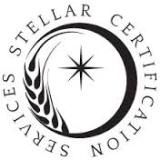
Demeter USA has been providing Biodynamic® certification services since 1985. In 2002 the United States Department of Agriculture (USDA), implemented the National Organic Program (NOP) to provide a uniform definition for the term “organic”. Because the Demeter Farm Standard utilizes the NOP requirements as a base minimum- upon which the additional Biodynamic requirements are built- Stellar Certification Services was formed so that Demeter certified producers could also legally label as organic. Stellar is currently both NOP and ISO-65 accredited and was one of the first organic certifiers in the world to achieve both accreditations.
Organic certification
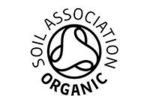
Soil Association Certification UK’s largest organic certification body certifies organic products - organic food and farming, organic textiles and organic beauty products. The Soil Association organic logo on pack gives guarantee to consumers that your produce meets the highest standards of sustainability and quality. It inspects and awards organic certification to farms and businesses that meet its organic standards. Organic standards cover all aspects of organic food certification including production and packaging, animal welfare, wildlife conservation, and ban unnecessary and harmful food additives in organic processed foods.
Demeter Biodynamic®

Biodynamics is a complete farm approach that manages soils, crops, and animals on a farm in such a way that the enterprises on a farm strengthen and support each other. The Demeter Biodynamic® Farm Standard applies to the certification of farms and ranches for the purpose of allowing their farms and ranches and resulting agricultural products to carry the Demeter certification marks “Biodynamic®”, “Demeter®” and Demeter Certified Biodynamic®. The Demeter Biodynamic Farm and Processing Standards meet the minimum requirements set by Demeter International. These base standards form a common legal foundation and agricultural framework for Biodynamic practice worldwide. Biodynamic® farming is free of synthetic pesticides and fertilizers in the same manner as certified organic farming.
It gives product’s true environmental impact. The label represents an environmental, health or animal welfare benefit. It enables consumers to make comparisons between labeled and non labeled food.
There is currently immense interest in measuring the sustainability of tourism in general and of ecotourism in particular. Hitherto, it has been difficult for consumers to know whether claims of tourism destinations and products being "ecologically sustainable" are based on hard evidence. The tourism industry has therefore been developing methods to measure these objectively in the form of ecolabels. These ecolabels are a seal of approval which shows that a product meets a certain eco-label standard.
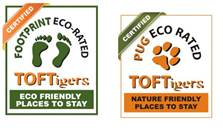 Eco – based Certification systems or ‘Kitemarks ‘, assures all travelers, their agents and operators, and all those involved in operating, planning or managing nature based tourism, that certified providers have been thoroughly examined and have reached or exceeded a minimal standard of commitment to sustainable practices in providing ecofriendly nature-based tourism experiences, be they luxury lodges, family resorts, tented camps or simple homestays.
Eco – based Certification systems or ‘Kitemarks ‘, assures all travelers, their agents and operators, and all those involved in operating, planning or managing nature based tourism, that certified providers have been thoroughly examined and have reached or exceeded a minimal standard of commitment to sustainable practices in providing ecofriendly nature-based tourism experiences, be they luxury lodges, family resorts, tented camps or simple homestays.
The PUG and Footprint Certification Programme is the first and only system that has been specially developed to address the need to identify and encourage genuine environmentally focused or ecotourism based, accommodation providers in the Indian subcontinent. The PUG certification is aimed solely at nature focused accommodation and lodge providers who seek to provide their visitors with a principally nature based travel experiences, and their operations have a very direct bearing on the nature destination itself, on its flora and fauna and with its neighbouring communities. The Footprint certification is aimed at all accommodation and lodging providers whose client base is not wholly nature focused, but enjoying leisure, family or corporate time within any destination, be it in a natural, rural or an urban landscape.
Energy Efficiency Labelling
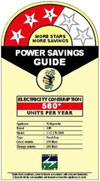
Energy labels are not proper eco labels because they focus on a single aspect and their use is often mandatory on certain products. STAR is a well-known environmental label focused on energy efficiency. It identifies and promotes energy-efficient products that have the same quality standards of equivalent models, and in addition reduce energy-related CO2 emissions and lead to cost savings.
The Bureau of Energy Efficiency, Ministry of Power has developed a scheme for energy efficiency labelling. The scheme was launched by the Hon'ble Minister of Power in May 2006 and is currently invoked for equipment/appliances (Frost Free (No-Frost) refrigerator, Tubular Fluorescent Lamps, Room Air Conditioners, Direct Cool Refrigerator, Distribution Transformer, Induction Motors, Pump Sets, Ceiling Fans, LPG, Electric Geysers, and Colour TV).
Under this program, for the benefit of general public, the appliance manufacturers could voluntarily affix BEE Star Label on their appliances showing the level of energy consumption by the appliance both in terms of absolute values as well as equivalent number of stars varying from one to five, in accordance with specific stipulation. The greater the number of stars on the label, higher the appliance energy efficiency and lower its electricity consumption However, from January 2010, affixing BEE star label has been made mandatory for Frost Free Refrigerators, whereas, BEE Labeling is still in the voluntary phase for Direct Cool Home Refrigerator.
EU Energy Label

The EU energy label shows how efficiently a product uses energy. The label rates products from dark green (most efficient) to red (least efficient). The label also shows total energy consumption and provides other information relevant to that product, such as water consumption and noise levels for washing machines, and screen size for televisions. Products in the darkest green category are the most energy efficient. Dark green rated products use less energy and help you to lower your energy bills and CO2 emissions. The higher categories appear in the green bands of A+, A++ and A+++ as products become more energy efficient.
Energy Star
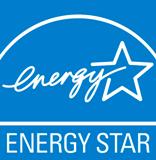
An international standard ENERGY STAR is a US Environmental Protection Agency (EPA) voluntary program. It is for energy efficient consumer products. It helps businesses and individuals save money and protect climate through superior energy efficiency. It was launched in 1992 and has been instrumental in reducing this energy use in order to realize significant greenhouse gas (GHG) emission reductions - contributing to important health and environmental benefits. In its 20th year, this program has boosted the adoption of energy efficient products, practices, and services through valuable partnerships, objective measurement tools, and consumer education. It certifies products, homes, and commercial facilities.
Sustainable Forestry Initiative

The Sustainable Forestry Initiative (SFI) is a forest certification standard. It is a non-profit organization. The American Forest and Paper Association launched it in 1994. The PEFC has recognized the SFI standard in 2005. It requires independent, third party audits and is executed by internationally accredited certification bodies. It certifies lands in the US and Canada, and programmme participants should comply with all applicable laws.
Forest Stewardship Council (FSC) Chain of Custody Certification
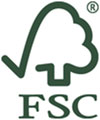
FSC is a global, not-for-profit organization devoted to the promotion of responsible forest management worldwide. It enables businesses and consumers to make informed choices about the forest products they buy, and create positive change by engaging the power of market dynamics. FSC certification is a voluntary, market-based system that allows companies to promote their products as deriving from well-managed forests.
In India FSC is based in New Delhi. FSC facilitates the development of standards, ensures monitoring of certified operations and protects the FSC trademark so consumers can choose products that come from well-managed forests.
TCO Development
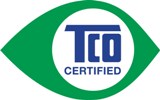
TCO Development is known internationally for TCO Certified, the sustainability certification for IT products. It has started in 1992 and works to ensure that the manufacturing, use, and recycling of IT products are carried out with regard to environmental, social, and economic responsibility. It certifies the products which meet strict criteria at the facilities where the product is manufactured, user safety and ergonomic design as well minimal environmental impact for both the product and its production during the whole life cycle. It makes easier for organisations worldwide to include and verify sustainability in IT purchasing with the support of TCO Certified, the sustainability certification for IT products. For a list of the products, use the TCO search page at http://tcodevelopment.com/tco-certified/
Electronic Product Environmental Assessment Tool (EPEAT)

EPEAT® is the definitive global registry for greener electronics. It’s an easy-to-use resource for purchasers, manufacturers, resellers and others wanting to find and promote environmentally preferable products. The EPEAT system combines strict, comprehensive criteria for design, production, energy use and recycling with ongoing independent verification of manufacturer claims. EPEAT was developed through a stakeholder consensus process and is managed by the Green Electronics Council (GEC), a non-profit organization based in Portland, Oregon, USA. It is dedicated to informing purchasers of the environmental criteria of electronic products. GEC's EPEAT web site provides guidance for purchasers and manufacturers and hosts the database of EPEAT-registered products. EPEAT-registered computer desktops, laptops, and monitors must meet an environmental performance standard for electronic products-IEEE 1680- 2006.
Green Dot

The Green Dot symbol on packaging indicates that the supplier of that packaging has contributed to the funding for recovery and recycling of packaging waste. The national packaging recovery organization has been set up in accordance with the principles defined in European Packaging and Packaging Waste Directive 94/62 and the respective national law. Self help organisations are using the Green Dot as financing symbol to finance the organisation for collection, sorting and recovery of used mainly household packaging. The ‘Green Dot’ systems have become internationally recognised models that contribute to the successful implementation of producer responsibility by the companies involved. Today, the ‘Green Dot’ is the most widely used trademark in the world. The Green Dot is not in itself compliance or recycling symbol nor can it be used to indicate that the packaging material on which it is marked is either recycled, or made using recyclable content.
NAPM Recycled Mark
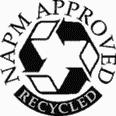
This mark is awarded to those papers, which contain a minimum of 75% genuine waste. Genuine waste is defined as: Converters’ waste - paper, which has left the mill and has become waste during a converting process such as cutting or slitting to meet a specific commercial order. Printers’ waste - printed or unprinted waste collected from a printing operation (trimmings, overs or rejects). Domestic or Office waste - collected from homes and offices, printed or unprinted. Paper and board qualities seeking to be certified with one of the NAPM Recycled Paper Marks must be manufactured from a minimum of 50%, 75% or 100% genuine paper and board waste fibre, no part of which should contain mill produced waste.
Leadership in Energy and Environmental Design (LEED)
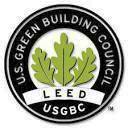
LEED is a rating system that is recognized as the international mark of excellence for green building in over 132 countries. It is an ecology oriented building certification programme run by the US Green building Council (USGBC). It focuses on improving performance across five main areas of environmental and human health- energy efficiency, indoor environmental quality, material selection, sustainable site development, and water conserving.
LEED (Leadership in Energy and Environmental Design) is an ecology-oriented building certification program run under the auspices of the US Green Building Council (USGBC). LEED concentrate its efforts on improving performance across five key areas of environmental and human health: energy efficiency, indoor environmental quality, materials selection, sustainable site development and water savings. Its special rating systems apply to all type structures including retail, school, and healthcare facilities. Rating systems are also available for new construction, major renovations, and existing buildings. LEED works because it recognizes that sustainability should be at the heart of all buildings – in their design, construction, and operation. It is helping to deliver energy and water efficient, healthy, environmentally-friendly cost saving buildings, homes, and communities.
GREENGUARD Certification Program
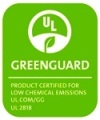
This programme was formerly known as GREENGUARD Indoor Air Quality Certification. It gives assurance that products designed for use in indoor spaces meet strict chemical emissions limits, which contribute to the creation of healthier interiors. Achieving GREENGUARD Certification gives credence to manufacturers’ sustainability claims, backing them with empirical scientific data from an unbiased, third-party organization. It ensures that a product has met some of the world's most rigorous and comprehensive standards for low emissions of volatile organic compounds (VOCs) into indoor air. Products certified under this program bear the GREENGUARD Certification mark from UL Environment.
CRI Green Label Plus

The CRI Green Label and Green Label Plus certifications evaluate emissions of volatile organic compounds (VOCs) found in carpet, cushions and adhesives. By passing Green Label Plus standards, these carpets protect indoor air quality from VOCs, ensuring that consumers are purchasing the lowest emitting products on the market while protecting employees, patients and children. Consumers can refer to the "Selecting Carpet and Rugs" page of the Carpet and Rug Institute's (CRI's) website http://www.carpet-rug.org/when determining which type of carpet to purchase.
Living Building Challange

The Living Building Challenge℠ is an attempt to dramatically raise the bar from a paradigm of doing less harm to one in which we view our role as a steward and co-creator of a true Living Future. The Challenge defines the most advanced measure of sustainability in the built environment today and acts to rapidly diminish the gap between current limits and the end-game positive solutions we seek. The Challenge aims to transform how we think about every single act of design and construction as an opportunity to positively impact the greater community of life and the cultural fabric of our human communities. The program has always been a bit of a Trojan horse—a philosophical worldview cloaked within the frame of a certification program. The Challenge is successful because it satisfies our left-brain craving for order and thresholds, and our right-brain intuition that the focus needs to be on our relationship with and understanding of the whole of life.
GRIHA

GRIHA is an acronym for Green Rating for Integrated Habitat Assessment. GRIHA is a rating tool that helps people assesses the performance of their building against certain nationally acceptable benchmarks. It evaluates the environmental performance of a building holistically over its entire life cycle, thereby providing a definitive standard for what constitutes a ‘green building’. The rating system, based on accepted energy and environmental principles, will seek to strike a balance between the established practices and emerging concepts, both national and international.
Sustainable Agricultural Network

The Sustainable Agriculture Network (SAN) promotes efficient and productive agriculture, biodiversity conservation and sustainable community development by creating social and environmental standards. The SAN promotes sustainable agriculture through the Rainforest Alliance Certified seal. The SAN standards are applicable to farms and farm groups that wish to become Rainforest Alliance CertifiedTM. The SAN fosters best management practices across agricultural value chains by encouraging farmers to comply with SAN standards and by motivating traders and consumers to support sustainability.
LEAF Marque
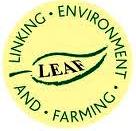
The LEAF (Linking Environment And Farming) Marque is an environmental assurance system recognising sustainably farmed products. Produce with LEAF Marque logo indicates that food produced by farmers who are committed to improving the environment. The LEAF is the organisation promoting sustainable food and farming. It helps farmers produce good food, with care and to high environmental standards. It aims to apply the principles and practices of Integrated Farm Management on a whole farm basis. The standard applies to all sectors of agriculture and offers an environmental "add on" to complement existing assurance schemes. These can be applied globally.
Best Aquaculture Practices
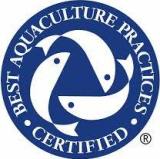
To promote responsible practices across the aquaculture industry, the Global Aquaculture Alliance coordinates the development of Best Aquaculture Practices (BAP) certification standards for hatcheries, farms, processing facilities and feed mills. The Best Aquaculture Practices Certified (BAP Certified) mark on packaging enlightens consumers that seafood came from farms and/or plants that meet the highest standards. The Best Aquaculture Practices standards specifically protect biodiversity and worker rights within a program that addresses environmental, social, food safety and traceability issues throughout producers’ operations. BAP certification is implemented through the Aquaculture Certification Council, an independent certifying agency that employs an international team of accredited evaluators to inspect facilities to the BAP standards through site inspections, sampling and record reviews. BAP certification is currently available for shrimp farms and hatcheries, and seafood processing plants.
Demeter Biodynamic®

Biodynamics is a complete farm approach that manages soils, crops, and animals on a farm in such a way that the enterprises on a farm strengthen and support each other. The Demeter Biodynamic® Farm Standard applies to the certification of farms and ranches for the purpose of allowing their farms and ranches and resulting agricultural products to carry the Demeter certification marks “Biodynamic®”, “Demeter®” and Demeter Certified Biodynamic®. The Demeter Biodynamic Farm and Processing Standards meet the minimum requirements set by Demeter International. These base standards form a common legal foundation and agricultural framework for Biodynamic practice worldwide. Biodynamic® farming is free of synthetic pesticides and fertilizers in the same manner as certified organic farming.
UTZ Certified
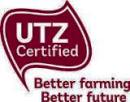
UTZ Certified stands for sustainable farming and better opportunities for farmers, their families and our planet. The UTZ program enables farmers to learn better farming methods, improve working conditions and take better care of their children and the environment. In order to create credible assurance of sustainable production, UTZ Certified has developed the UTZ Codes of Conduct. These codes consist of product-specific standards for coffee, cocoa, tea and rooibos, as well as chain of custody standards and a thorough certification system. It focuses on three key areas: Management-traceability of product back to the source, efficient administration and worker training, Social-complying with international labour standards, occupational safety and health and local development; and Environmental-soil and water quality, energy use and deforestation.
FAIRTRADE Program Marks

The FAIRTRADE Program Marks represent the Fairtrade Sourcing Programs, which honour the way that different companies do business. Some companies source all that they can as Fairtrade. Others want to source 10 %, 30 % or even all of their overall volumes of an individual ingredient on Fairtrade terms. This new program allows companies to commit to Fairtrade and source large volumes of individual Fairtrade ingredients. With the introduction of the FAIRTRADE Program Marks, Fairtrade is innovating in the system to secure greater sales volumes for Fairtrade producers and provide more options for companies and consumers. The FAIRTRADE Program Mark will begin appearing on products in select markets in early 2014. The new Fairtrade Sourcing Programs create a huge opportunity for cocoa, sugar and cotton farmers to sell more of their crops on Fairtrade terms, meaning more Fairtrade benefits for their farms and communities.
International Environmental Standard for Fisheries Management
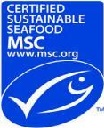
The Marine Stewardship Council (MSC) is an independent non-profit organization. It has developed an international environmental standard for fisheries management. The science-based MSC standards are assessed by a team of experts who are independent of both the fishery and the MSC. This standard is based on the FAO Code of Conduct for Responsible Fisheries. Its mission is to use its ecolabel and fishery certification program to contribute to the health of the world’s oceans by recognising and rewarding sustainable fishing practices, influencing the choices people make when buying seafood, and working with partners to transform the seafood market to a sustainable basis
GOPCA

Gujarat Organic Products Certification Agency (GOPCA) is a Gujarat State Government Certification Body that carries out impartial third party inspection & certification in organic production and handling. GOPCA works in accordance with the criteria laid down under the NPOP (National Program for Organic Production) 2005-Jun, 2015. GOPCA is an autonomous body and is registered under Societies Registration Act, 1860. The Agency is non-profit certification program developed in response to the changing market requirements and regulatory nature of organic certification. The aim of GOPCA is to provide reliable and efficient inspection & certification services to the smallest of operators/farmers in a cost efficient way and thus promote organic farming in the state.
UL Environment
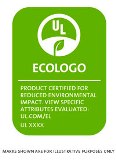
The UL Environment, a leading global science company, for meeting UL Environment’s high Sustainable Product Certification standard. It is business unit of UL with a mission to promote global sustainability, environmental health, and safety by supporting the growth and development of environmentally preferable products, services, and organizations. It offers third-party certifications for environmental claim validations, multi-attribute product certifications, environmental product declarations, product emissions certification, product emissions testing, organizational sustainability certification, and consulting. For details please visit UL Environment.
CarbonFree® Certified
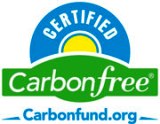
The CarbonFree® Product Certification label is aimed at increasing awareness of product emissions and recognizing companies that are compensating for their carbon footprint. The impact of greenhouse gas (GHG) emissions and climate change is a global concern. This label is an answer to the demand of the consumer for eco friendly products and transparent, credible and readily accessible information at the point of purchase. Carbonfund.org with the partnership of NSF Sustainability has created a meaningful, credible and environmentally beneficial way for businesses to provide carbon-neutral products to the consumers. These organizations are promoting and implementing the CarbonFree Products Program. It has a science based approach and performs a life cycle assessment (LCA) to determine the carbon footprint of products. It is a third-party certification.
Cradle to Cradle

The Cradle to Cradle Certified program is a third party, multi-attribute eco-label administered by the Cradle to Cradle Products Innovation Institute that assesses a product’s safety to humans and the environment and design for future life cycles. The program provides guidelines to help businesses implement the Cradle to Cradle framework, which focuses on using safe materials that can be disassembled and recycled as technical nutrients or composted as biological nutrients. Unlike single-attribute eco-labels, the Cradle to Cradle Certified program takes a comprehensive approach to evaluating the design of a product and the practices employed in manufacturing the product. The materials and manufacturing practices of each product are assessed in five categories: Material Health, Material Reutilization, Renewable Energy Use, Water Stewardship, and Social Responsibility.
Certification body for Sustainable Development
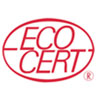
An inspection and certification body for organic, fair trade, and good agricultural practices (GAP), named Ecocert, operates in eighty countries of the world. It provides inspection and certification services for safety of environment and mankind. In India, Ecocert operates from Aurangabad, Maharashtra. It covers south Asian countries. It has started its operations in India in 2002.
Ecocert India has certified over three hundred thousand hectares of land for 170 of its clients constituting Processors, Exporters, Farmers' Groups and Individual Farmers. The main objective of Ecocert is to promote the India Organic logo in the international markets and the Agmark India Organic logo in the Indian markets and give recognition to organic produce from India. Regular audits by its Head Office and Accreditation agencies help Ecocert sustain the faith of the clients and consumers.
Fair Trade
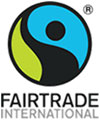
Fairtrade represents a new way to do business that looks holistically at the supply chain to address market failures and their social impact at source. It is not about aid or charity, but about recognizing the global community as having rights and responsibilities that extend across all of its stakeholders. Fairtrade standards are designed to support the sustainable development of small producer organizations and agricultural workers in the poorest countries in the world.
Its India office is based in Delhi and its mission is to be an organ of representation, coordination, exchange, and collaboration for the empowerment of small-scale farmers' and farm workers' organisations from Asia within the framework of Fairtrade Certification.
ISO 14000
The International Organisation for Standardization (ISO) develops international standards for all industrial sectors. The ISO 14000 family addresses various aspects of environmental management. It provides practical tools for companies and organizations looking to identify and control their environmental impact and constantly improve their environmental performance. It is awarded to organisations that identify and control the environmental impacts, comply with environmental laws/regulations and fulfill other requirements and continually improve upon them.
Natrue-Label
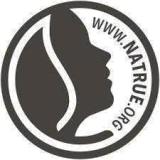
Brussels based the International Natural and Organic Cosmetics Association A.I.S.B.L. (NATRUE) has developed the “NATRUE Label” with an objective to ensure the availability of quality natural and organic cosmetic products for consumers worldwide. NATRUE have launched a formal and independent accreditation scheme to provide greater assurance to the NATRUE label. The NATRUE standard is characterised by three labels: natural cosmetics, natural cosmetics with an organic content of 70% and organic cosmetics with an organic content of 95%.
Cruelty-free / Bunny logo

This is a general claim that specifies that no animal testing have been done on the product and its ingredients. It is generally found on cosmetics and personal care products. However, the claim is not being verified by any government agency or any independent organisation. Most raw materials used in cosmetics were tested on animals years ago. The manufacturer might use those raw materials and base their ‘cruelty-free’ claim on the fact that the materials or products are not currently used on animals. The animal rights movement to describe products that have been manufactured without animal product often uses it.
Green claims that accurately convey the environmental attributes of products help consumers to make informed choices. Misleading, false, meaningless or unclear information can result in consumers losing confidence in environmental claims and labels in general, lead to unfair business competition and discourage companies from making truthful claims.
Mobius Loop

The Mobius Loop is a universal recycling symbol. It is an internationally recognized symbol and often used to indicate that a product or its packaging is capable of recycling or has recycled content. It is composed of three mutually chasing arrows that form a Möbius strip (an unending single-sided looped surface). The inclusion of a number inside the loop shows the percentage of recycled material that has been used to make the product. But this claim is sustainable only if the local waste handling system accepts it.
Litter disposal symbol
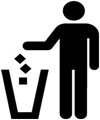
The presence of this symbol on products is often presumed to indicate its eco-friendliness. The symbol just encourages consumers to dispose waste responsibly.
Such claims are devoid of meaning as they are neither clear nor specific. All products have some impact on environment. Some manufactures may mention explicit reasons why they consider their product to be environment-friendly. In the absence of any such definitive information, there is no way to determine whether the labelled products are in any way better than the others available in the market.
Biodegradable
Biodegradation is the chemical dissolution of materials by bacteria or other biological means. This term is often associated with eco friendly products that are capable of decomposing back in to the natural components. It should be break down within reasonable time. The exact time it takes to get decomposed depends on how and where it is disposed, although technically a product is degradable. Thus, the label “Biodegradable” can often be vague and misleading.
Non-toxic
The ‘non-toxic’ claim implies that a product will not cause any adverse health effects, either immediately or eventually. However, there are no specific standards to verify the ‘non-toxic’ claim.
Ozone-friendly
"Ozone friendly" label can be found in most cases on deodorants and refrigerators. It means, that the product does not contain CFC [Chlorofluorocarbon] gases, which causes damage to ozone layer, which shields earth from Sun’s radiation. Many products, such as refrigerants and aerosols, were once made with compounds that destroyed ozone when they were released into the atmosphere. Other chemicals like volatile organic compounds (VOCs) are harmful in the lower atmosphere as they contribute to the formation of ozone at ground level. Ground level ozone layer creates smog – a type of air pollution.
CFCs (Chlorofluorocarbons) Free
CFCs damage the ozone layer in the upper atmosphere, while FCs contribute to the greenhouse effect. Nearly all-conventional refrigerators and air conditioners were using one of them as a refrigerant. As per Montreal Protocol - the international treaty for the protection of ozone layer- CFC production is now phased out in developing countries including India. Many products are now free of CFCs. This label is commonly found on refrigerators, air conditioners, and on spray cans.

